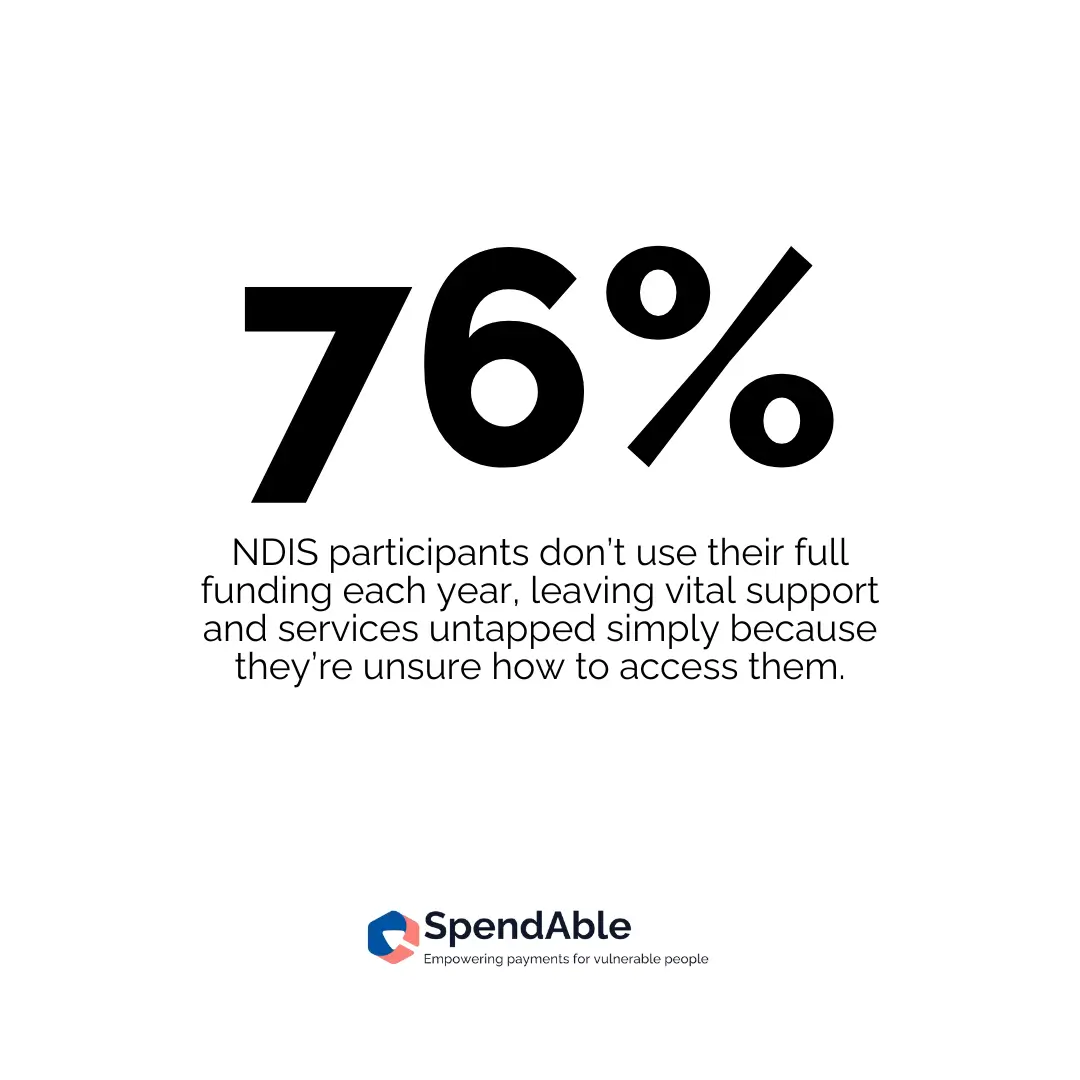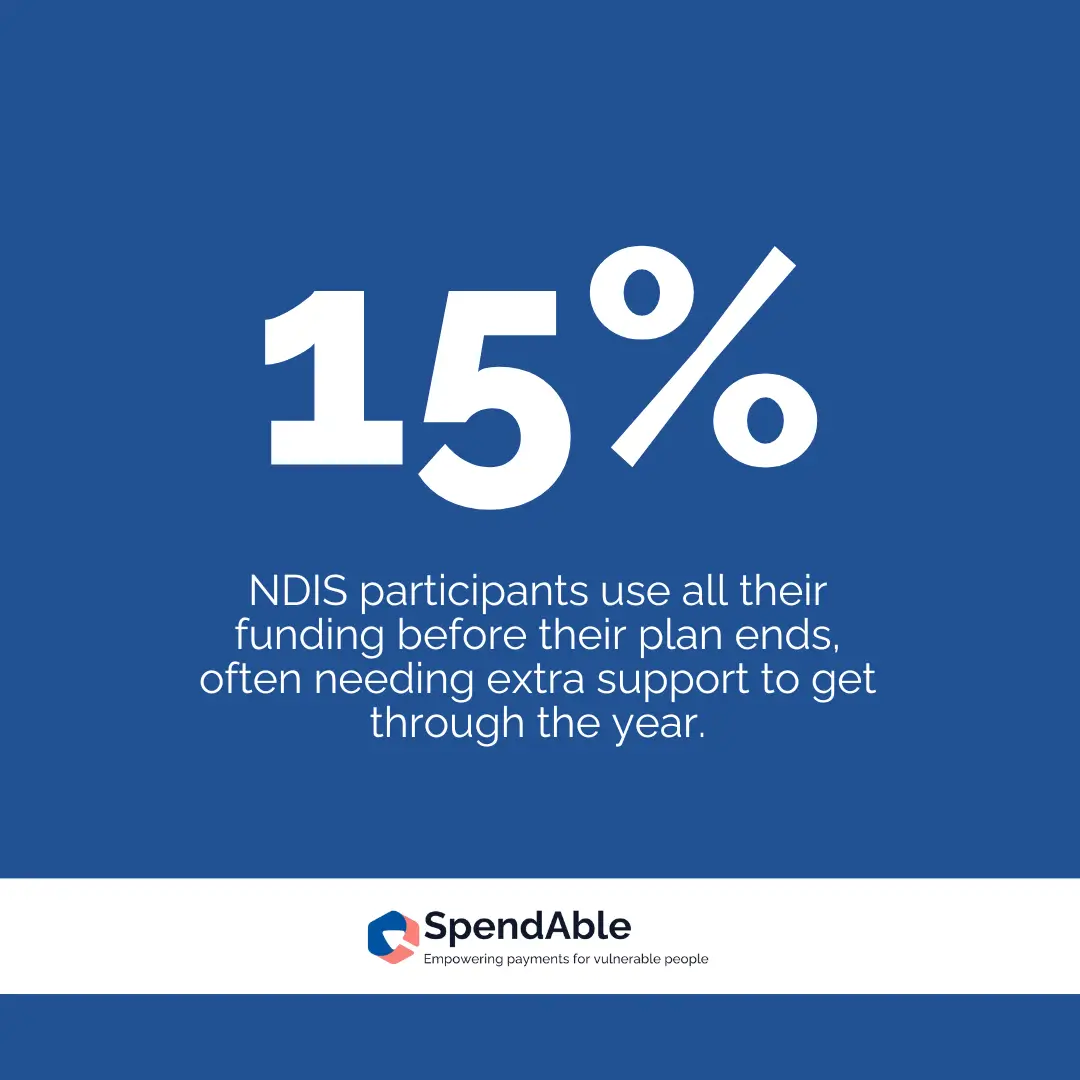What Does Allocated Funds Mean NDIS 9 Simple Examples That Finally Make It Easy to Understand

Key Takeaways
- Allocated funds in your NDIS plan simply mean money set aside for specific supports, showing you exactly what each dollar is meant to pay for.
- You can’t usually move money between your Core, Capacity Building, and Capital budgets, so knowing which one covers what helps you plan smarter.
- Keep an eye on your balances and ask for a review if your allocations don’t match your needs. Your plan should work for your life, not the other way around.
Allocated funds in your NDIS plan aren’t as complicated as they sound.
They’re simply the money the National Disability Insurance Agency (NDIA) sets aside for specific types of support.
Once you know how it works, you’ll stop worrying about making a wrong move with your plan.
In fact, a recent survey found 82% of participants faced barriers to fully using their NDIS plan, so if you’ve felt confused, you’re not alone.
In this article, we’ll unpack what allocated funds actually mean in plain terms. You’ll learn how they’re broken up, who decides how much goes where, and how to use them without fear of wasting money.
We’ll go through nine easy, real-life examples so you can see exactly how it all plays out.
Maybe you’ve opened your plan and wondered why some funds can move around but others can’t. Or maybe you’ve had money left unspent at the end of the year and had no clue why you couldn’t roll it over.
That’s the kind of confusion we’ll clear up here.
And it’s an important one. Recent NDIS data suggests that only about 76% of participants’ funding is used on average, meaning nearly a quarter of plan budgets go unused each year simply because people aren’t sure how to tap into them.

By the end, you’ll have a solid grip on how every dollar in your NDIS plan fits together. You’ll also know how to keep track of it, what to do when funds start running low, and how to ask for changes when your needs shift.
Getting clear on what allocated funds really mean in your plan
Allocated funds are simply money put aside for specific supports or services in your NDIS plan.
The NDIA reviews your goals, listens to what you need, and breaks down your total budget into smaller parts.
Each section exists for a reason. Some cover daily help. Others focus on therapy or on tools and equipment that help you live better.
For example, you might have one portion for transport, another for physiotherapy, and another for assistive technology. This makes it easier to understand where your money goes and how it helps you.
The structure is there to guide your spending, not restrict you for fun. Some areas are flexible. You can move funds around a bit. Others are tight and can’t be changed without approval. Once you know the difference, managing your plan becomes easier.
For instance, the NDIS labels certain supports as “stated” items, meaning those funds must be used exclusively for that specific support and nothing else. You can’t repurpose that money elsewhere, whereas other supports are marked “flexible,” giving you more choice in how to spend them.
Getting your head around allocated funds means you can plan ahead.
You’ll be able to predict costs, avoid running out, and make sure you don’t end up paying for things outside your plan. It also makes you more confident when speaking with providers or your plan manager.
When you understand what each dollar does and why it’s been placed there, you take charge. That’s the real win.
How the NDIA decides how much is allocated in each area
When the NDIA builds your plan, the process is detailed. They look at your goals, your support needs, and professional evidence.
Reports from your therapists or doctors help guide the amounts. For example, if your physiotherapist confirms you need weekly sessions, the NDIA calculates the cost and sets a specific amount. If you need equipment like a mobility scooter or communication device, they get quotes to decide what fits.
Allocations can vary a lot. Two people with the same diagnosis can have very different budgets because their circumstances and goals are unique. That’s why it’s important to share updated reports whenever something changes.
Communication matters here. If you’re not sure something in your plan makes sense, ask your planner. You can question or clarify any amount. If something doesn’t fit, you can request a review.
The more information you give, the better your plan matches your real needs. Don’t hold back updates.
Allocations depend on accuracy. When the NDIA has the full picture, you get a plan that actually works for you, and not one built on guessing.
Understanding your three NDIS budget areas in plain terms
Your plan has three main budgets. They have simple names but serve different purposes, and come with different flexibility.
Core Supports help with everyday life. Think of chores, personal care, or getting to appointments. This is often the most flexible budget. You can usually move funds between categories in Core, such as from cleaning to transport, if that suits you better.
Capacity Building Supports help you grow your skills and reach your goals. That could be therapy such as occupational therapy, counselling, or training programs to build your independence. It’s about self-improvement and long-term outcomes. These funds are more fixed. You must use them as planned.
Capital Supports are for big one-time purchases. Things like wheelchairs, adjustable beds, hearing devices, or home modifications. Because these are large costs, Capital is the most restricted budget. You’ll need NDIA approval for any changes.
Here’s an example. You might have funds for speech therapy under Capacity Building, but you can’t use that money for house cleaning under Core Supports. However, within Core, you might choose to use less for personal care and more for transport if the plan allows.
In practice, people tend to use a much higher share of their Core funds than the other categories. On average, participants use about 81% of their Core support budget each year, but only around 59% of Capacity Building funds and 56% of Capital funds.
This gap shows how Core supports are easier to flex and spend, whereas therapy or equipment funds often go underused if plans or providers don’t line up perfectly.
Once you understand how each area works, your plan starts to feel simpler. You’ll know what’s flexible and what isn’t. You’ll also stop wondering if you’re “allowed” to spend in certain ways.
Real-life examples that make allocated funds easy to picture
Example 1 — Weekly support worker hours for personal care
Say you need daily help with hygiene, dressing, or light cleaning. Your Core Supports might include funding for ten hours each week. That’s fixed based on your needs. If you don’t use all those hours, the leftover amount remains within the same Core budget but can often be used for another Core service.
Example 2 — Speech therapy sessions for skill building
If you have goals to improve communication, the NDIA might allocate money for ten sessions of speech therapy. This sits under Capacity Building. You can’t use that money on something else, like transport, because it’s tied to the therapy goal.
Example 3 — Equipment purchases like a wheelchair
Capital funding is where equipment sits. After an occupational therapist recommends a wheelchair and provides a quote, the NDIA sets aside that amount. It’s a one-time purchase, not something you can move around.
Example 4 — Community activities under Core Supports
Social participation matters. Your plan might include funding for joining art classes or group fitness sessions. It’s an example of Core Supports helping you stay connected.
Example 5 — Transport allowance for appointments
If you’re unable to use public transport easily, you may have a transport allocation within Core Supports. This helps pay for taxis or community transport to appointments or work.
Example 6 — Home modification budget
Need a ramp, grab bar, or bathroom adjustment? That’s Capital funding. It’s designed for safety and to make your environment more accessible.
Example 7 — Training or skills development
This falls under Capacity Building. You might have money set aside for a computer course or an employment readiness program to boost your independence.
Example 8 — Plan management fees
If you have a plan manager, the NDIA includes a set amount to pay them. You don’t lose funds from your support budget, it’s a separate allocation.
Example 9 — Support coordination
Some plans include funds for a support coordinator. They help you make sense of the plan, manage services, and stay organised. It’s all about removing confusion so you can focus on supports.
Spending rules and what you can and can’t move between allocations
Core funds are often the most flexible. You can move money between categories within Core, such as personal care or transport. But that’s where it ends. You can’t move funds from Core to Capacity Building or Capital. If you do, payments will likely be declined.
The NDIS rules make this clear: you can juggle funds among Core supports, but you can’t use Core money for a Capacity Building item, or Capacity Building funds for a Capital item, etc.
Each budget has its lane, and crossing over isn’t allowed by the system.
Capacity Building and Capital support are strict. Those funds can only go toward what was approved. If you try to use Capacity Building funds for home equipment, the request will be rejected.
Before moving anything around, speak with your plan manager or NDIA contact. They can check if it’s possible. It’s better to confirm than fix mistakes later.
Most people track spending using the myplace portal or monthly reports from plan managers. These show exactly where you stand. Keep an eye on remaining balances so you’re not caught off guard.
When your allocated funds start to run out
Running low on funds can happen faster than you think.
In fact, in a recent year, the NDIA noted roughly 15% of participants spent their entire budget before their plan’s end date, meaning they had to ask for extra funding to get through the year.

When you notice a specific category is nearly empty, check before booking new sessions or services. Overspending isn’t allowed, even by accident.
If you’re using money faster than expected, talk to your plan manager as soon as possible. They can review spending and help you adjust. They might suggest using leftover funds in flexible categories if it’s allowed or discuss a review if needs have changed.
If your plan was based on old information, or if your situation changed, such as needing extra therapy hours, ask for a plan reassessment. Back it up with recent reports or quotes. That’s how you show the need for changes.
Regular tracking is your best defence. A weekly or monthly check-in keeps things in control. It’s like checking your fuel gauge before driving long distances. Small checks now stop big issues later.
And remember, providers might have to pause services if your funding runs completely dry with no plan updates in place, so it’s crucial to address low funds early before it reaches that point.
Making the most of leftover funds before your plan renews
Unused funds don’t roll over. Once your plan ends, that money goes back. There’s no “savings account” for unspent NDIS funding, if you don’t use it by the plan’s end date, it’s returned to the scheme.
So, if you’ve got leftover sessions or supports, consider booking them before renewal.
Check your balances a few months before your plan's end date. It gives you time to use what’s left wisely. Maybe you’ve delayed therapy or skipped community programs, now’s the time to use them.
If you find yourself with leftover funds every year, talk to your planner. It might mean your plan could be adjusted so the next one better reflects your actual spending.
Using all your funds means you’re getting the full benefit from what’s been given.
Simple ways to track and manage your NDIS funds easily
Keep it simple. Use the myplace portal or ask your plan manager for statements. These tools show what’s been spent and what’s left.
If you prefer apps, a few budgeting ones can track expenses too. Set reminders every few weeks to check balances and upcoming bookings. Don’t wait until the last minute to find out you’re out of funds.
A monthly review habit pays off. Look at spending patterns and upcoming costs like annual equipment servicing or therapy breaks. It helps you stay in control.
Clarity saves time. When you know where money goes, you can have open conversations with providers and avoid messy surprises.
Managing your NDIS funds is about small, regular checks that give you peace of mind.
Asking for a review when your allocation doesn’t fit right
Sometimes your plan just doesn’t fit your needs anymore. Maybe your health changed, or you’re using supports faster than planned. When that happens, ask for a review.
Reach out to your planner or Local Area Coordinator. Provide reports or quotes from professionals to show what’s changed. Be precise about what’s wrong and what needs updating.
Your plan manager or support coordinator can help prepare your evidence. They know the right documents to include and how to explain the issues clearly.
Don’t feel like you’re doing something wrong by requesting changes. Plans are meant to evolve with your needs. In fact, plan adjustments are so normal that in late 2024, the NDIA received a surge of review requests, and they even automatically extended some people’s plans to handle the high demand.
The system is there to be adjusted when needed, so speak up if something doesn’t match your life anymore.
Wrapping it all up with clarity and confidence
Allocated funds aren’t scary once you understand them. They’re just money divided into sections to make life simpler.
Each part of your NDIS plan serves a purpose. Core covers daily help. Capacity Building focuses on growth. Capital handles big-ticket supports. Once you see how they connect, the confusion fades.
Keep your plan updated, track your spending, and speak up if something doesn’t match your needs. That’s how you stay in control.
The goal isn’t to master the NDIS system, but to make your plan work for you. When you understand allocation, you stop guessing and start managing with confidence.




.jpg)